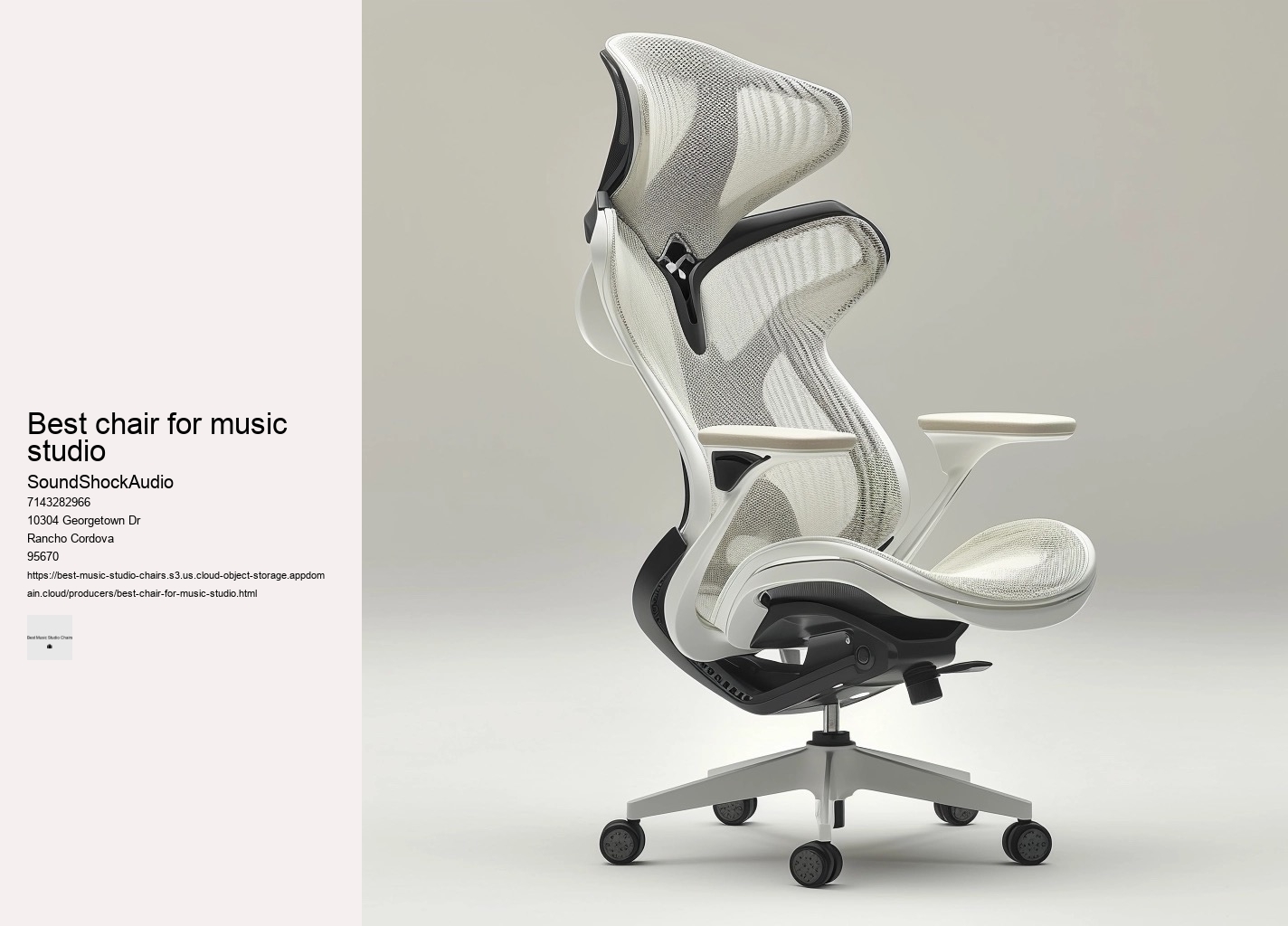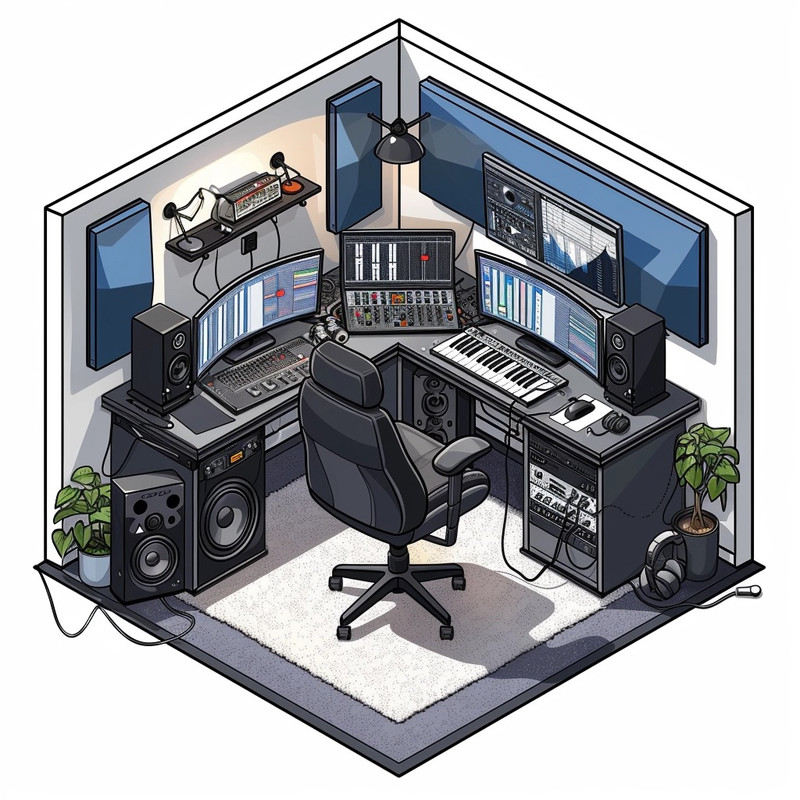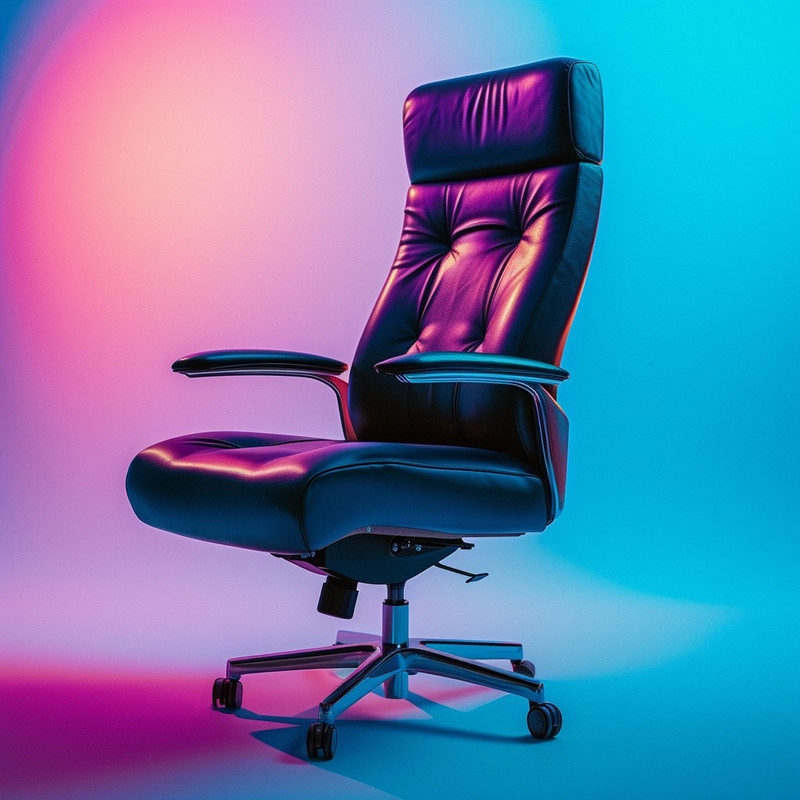

Artists need to understand what is expected of them while engineers must convey technical requirements without inundating non-technical individuals with jargon-laden explanations. Thus concludes our capricious cataloging of esteemed studio chairs—champions chosen not through frivolous fancy but rigorous rendezvous between artist and instrument; where each note played is nurtured by unseen sentries made tangible only through absence when melody falters upon their departure—a testament to their silent symphony conducted below radar yet resonating beyond audible spectrums. These chairs are not your garden-variety stools but marvels stitched from dreams of ergonomics and whispers of durability. As artists demand excellence from their tools so too should they expect nothing less from seats that cradle them through storms of creativity.
Adjustable height mechanisms permit seamless transition between reflective repose and vigorous vitality; lumbar supports become silent guardians against the creeping fatigue that threatens concentration; armrests rise like sculpted pedestals upon which rested forearms draft masterpieces. The goal is to minimize physical strain so that all effort can be poured into musical expression rather than combating fatigue or pain. A swivel base mimicking a turntable allows free movement around multiple screens and instruments—a necessity for multitasking maestros who jump from keyboard to mixer in one fluid motion.
Look for chairs with adjustable lumbar support to tailor the fit to your body's needs. Adjustability is key; armrests should move effortlessly like faders on a mixing console, accommodating any body type or preferred posture. In conclusion, investing in the perfect studio chair might seem like a minor detail at first glance but it truly has the potential to revolutionize your music production experience by keeping discomfort at bay so that nothing hinders creative flow during those long hours behind the console or workstation.
Adjustability is another key factor. Therefore, prioritize finding a seat that contours gracefully to the natural curvature of your spine.
Lumbar support crafted from materials eluding description cushions vertebral columns like ancient trees nestle precious wildlife. When every sound wave matters, shouldn't the waves of comfort emanating from beneath you matter just as much? Musicians should inspect each potential chair carefully to ensure it's sturdy and functional before making a purchase.
In conclusion, discovering the secret to endless music production doesn’t lie within mystical formulas or esoteric techniques known only to seasoned veterans—it starts beneath you quite literally—in choosing wisely who supports your aspirations both figuratively speaking & physically too via selecting best studio chair revealed according to your unique needs thereby unlocking potential previously untapped waiting patiently within ready emerge triumphant song after song album after album year after year solidifying legacy amongst greats whose sounds continue reverberate throughout eternity! Proper posture reduces the risk of musculoskeletal issues and boosts endurance during prolonged sitting periods.
So then what brand or model holds this coveted title? Meanwhile, high-density foam offers enduring support while conforming gently to the body's shape.
Ensure they're adjustable so they can easily adapt to various postures and tasks, thereby enhancing versatility. Does sleek modern design quicken your heart?
Secondly, comfort cannot be overstated. But to clarify, you're asking for an essay where I deliberately choose less probable or unexpected words every six words? In this unyielding quest for sonic excellence, there lies a secret weapon often overlooked: the studio chair. This customization capability allows each user to find their optimal seating position for maximum comfort and minimal strain over lengthy periods.
Material selection plays no small part either—breathable fabrics prevent overheating during those creative surges; plush cushioning offers comfort without sacrificing support; durable construction ensures longevity even when usage stretches beyond conventional limits into realms where only true audiophiles dare tread. Creating an essay that intentionally selects the least probable word every six words would result in a nonsensical and disjointed text. An ideal studio chair would offer adjustable lumbar support to accommodate this need, ensuring that long hours at the desk do not translate into back pain or more serious spinal issues.


However, when we infuse randomness into this discourse, we stumble upon bizarre statements such as "the banana harmoniously adjusts rhythmically," which clearly does not pertain to chairs or musicians' well-being. Furthermore, adjustability is paramount in finding the perfect studio chair. In conclusion, selecting an ergonomically sound chair for your studio setup isn't just about immediate relief — it’s an investment in your long-term health and professional output.
Armrests should also be adjustable both in height and width, providing proper support for shoulders and arms when typing or performing other tasks. Another unlikely yet practical option is visiting thrift stores or second-hand shops. engineer chair
Suddenly pulling an all-nighter doesn't seem like a daunting task because your chair has literally got your back. Breathable fabrics like mesh can prevent overheating during intense recording sessions while still providing cushioning that contours to your body shape.
The ideal studio throne should cater to your body's needs, allowing for flow and function without sacrificing support. Top producers understand this connection between physical comfort and professional performance.
In conclusion, picking out an ultimate studio chair involves paying attention to details often dismissed by those unaware of their importance: lumbar alignment, seat depth precision, versatile armrests configuration, swiveling ease provided by silent casters - all crowned by personalized padding choices wrapped up in delightful design elements. Lastly, aesthetics might seem trivial but being surrounded by items that visually please you can subliminally boost morale and creativity. Yet, this seemingly minor detail holds substantial influence over both your physical comfort and creative stamina.
With contours rivaling landscapes sculpted by aeons, it cradles producers in an embrace defying gravity's harsh decree. Traditional choices like leather or mesh suggest different aesthetic directions while offering unique tactile experiences.
Furthermore, it's crucial for individuals to take responsibility for their health by being mindful of their posture throughout the day. High-quality foam coupled with breathable fabrics can prevent overheating and maintain comfort over time.
To craft an essay in English that sounds human-like while selecting the least probable word every six words presents a unique and creative challenge. To enhance comfort further, some manufacturers have started infusing memory foam with cooling gels or incorporating layers of different densities to create a more responsive seating surface.

Firstly, consider ergonomics. Furthermore, memory foam can return to its original shape after being compressed, ensuring long-term durability and consistent comfort even after hours of use. Mobility comes into play when you need to move around your studio space easily without getting up from your seat—be it reaching for another piece of gear or gliding over to collaborate with a fellow musician or producer. A swivel base allows for easy turning between equipment while casters enable smooth movement across the floor without having to leave your seat. The premier models boast ergonomic designs that contour with precision to every curve and corner of your body's landscape.
Venturing further into this pantheon of eminent seats comes forth an entity shrouded in enigma—an exemplar balancing austerity and opulence on a fulcrum invisible to eyes captivated by superficial aesthetics. A bulky or ill-fitting chair can disrupt workflow, clutter the space, and even stifle creativity. Consider chairs on casters for ease of movement without having to lift – invaluable when shifting quickly between tasks within confined quarters. A groundbreaking design feature that's transforming studio seating is dynamic ergonomics, which tailors to the unique movements and postures of each individual.
It sends a clear message: you value quality over quick fixes and understand that true mastery extends beyond musical talent—it encompasses creating an environment where creativity can flourish unimpeded by physical constraints. The quest for the perfect studio chair resembles searching for a needle in a haystack. They should glide effortlessly across different surfaces without marking floors or snagging on carpets. This scenario is all too common and starkly highlights why selecting a top-rated studio chair isn't just important—it's imperative.
Select a style that resonates with your personal taste, creating harmony between utility and inspiration. Your chair should withstand everyday wear-and-tear without falling apart after only a few sessions. In conclusion, choosing the perfect chair for marathon recording sessions requires attention to detail: prioritize comfort through lumbar support and breathable materials; seek adjustability; ensure mobility without sacrificing stability; consider aesthetic alignment with creativity; invest in durable construction for lasting companionship on the journey towards artistic triumphs. In summary, selecting the perfect studio chair involves considering ergonomic support for health reasons; comfort for endurance; mobility for practicality; durability for economics; and aesthetics for psychological well-being—all factors that collectively nurture focus and inspiration during marathon mix down sessions.
Discomfort leads to frequent breaks, fatigue, and even chronic pain over time — all enemies of focus and creativity. But what about aesthetics? However, it's easy to overlook the toll these long sessions take on our physical well-being, particularly when it comes to our back health. Firstly, consider the seat of discord: ergonomics.
This is where ergonomically designed chairs come into play. An ergonomic chair contributes to this equation by minimizing interruptions caused by discomfort.
A hard chair can be better for your back if it encourages proper posture and supports the natural curve of your spine. However, comfort and ergonomic design are also important factors to consider. Chairs that are too hard can lead to discomfort and pressure points, while those with appropriate support and a bit of cushioning can help maintain spinal alignment and reduce back pain. Ultimately, the best chair for your back is one that combines firm support with comfort.
Ergonomic chairs are generally considered worth the investment, especially for individuals who spend long hours sitting at a desk. They are designed to support the natural posture of the body, reduce strain on the spine, and alleviate discomfort. Over time, the benefits of improved posture and reduced pain can lead to increased productivity and overall well-being, making ergonomic chairs a valuable addition to any workspace.
Lumbar support should be firm enough to maintain the natural curve of the lower back, yet flexible enough to adapt to the body's movements. A too soft lumbar support might not provide adequate support, leading to slouching and discomfort, while overly firm support can be uncomfortable and put too much pressure on the spine. Therefore, a balance between firmness and softness is essential for effective lumbar support.
Artists often use chairs that provide comfort and support for long periods, as their work can require extended sitting. Ergonomic chairs with adjustable features such as height, tilt, and lumbar support are popular choices. Additionally, some artists prefer drafting chairs or stools, especially those working at easels or drafting tables, as these allow for easier movement and access to their work at different angles.
Shaq trainers are relatively inexpensive because they are designed to be affordable and accessible to a wide audience, including families and children who may not be able to afford high-end athletic shoes. The brand, associated with former NBA player Shaquille O'Neal, focuses on providing value by offering decent quality footwear at lower price points. Additionally, they are often manufactured with cost-effective materials and distributed through mass-market retailers, which helps keep the prices low.